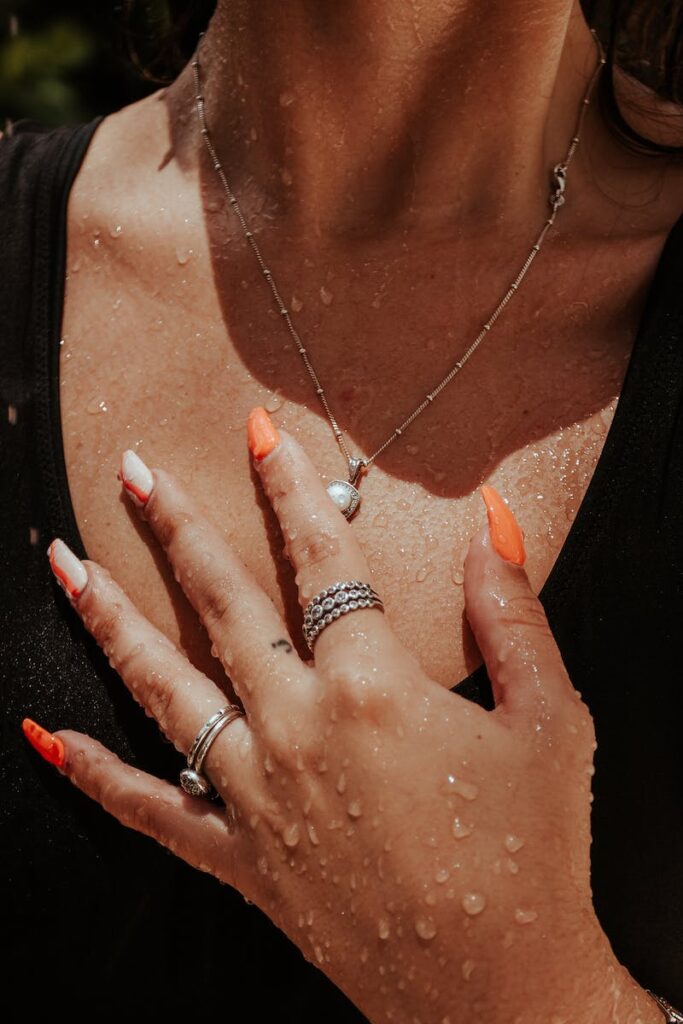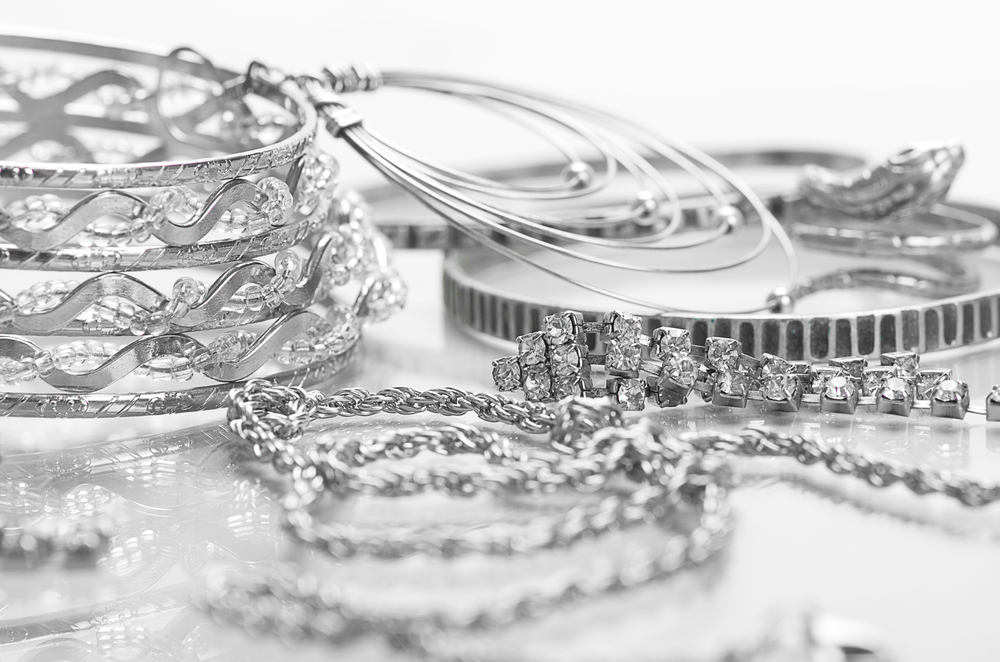Sterling Silver: Does It Rust, Tarnish, or Turn Your Skin Green?
One of the most popular metals for jewelry is sterling silver. It’s cheap, lasts a long time, and can be used in many ways, so many people choose it. One bad thing about sterling silver, though, is that it tarnishes over time. If you have sterling silver jewelry, you should know how to take care of it so it doesn’t get tarnished and stays looking its best.
We’ll talk about how to keep sterling silver from getting tarnished and about all the other myths.

Myth #1: Sterling silver always tarnishes
A common misconception about sterling silver is that it always turns black. Even though sterling silver can lose its shine over time, this doesn’t always happen. The silver and sulfur or oxygen in the air react to make silver tarnish.
So, your sterling silver is less likely to get tarnished if you store it in a box that keeps air out. Also, if you wear and touch your silver jewelry often, the oils from your skin can help protect it from tarnishing.
Don’t worry if your sterling silver has tarnished; it’s easy to clean. You can use a cloth made for polishing silver or a cleaning solution made just for sterling silver. Just be careful not to polish too much, as this can remove the silver’s protective layer and cause it to tarnish more in the future.
Myth #2: Sterling silver turns green
One more lie about sterling silver is that it will make your skin turn green. Some of this is true, but it’s not because of the silver. The green color is actually caused by the reaction between the copper in sterling silver alloy and the acids in your skin. When the copper meets the acids, a green substance called copper sulfate is made.
You can coat the inside of your sterling silver jewelry with clear nail polish to stop it from turning your skin green. This will keep your skin from getting hurt by the metal. You can also try not wearing your jewelry as much or making your jewelry out of a different metal.
Myth #3: Gold-plated sterling silver doesn’t turn black
Gold-plated sterling silver is a popular choice for jewelry because it looks expensive but doesn’t cost as much as pure gold. But gold plating doesn’t keep things from rusting. The base metal, which is usually sterling silver, can still tarnish over time. The gold plating might make the process of rusting slower, but it won’t stop it completely.
If your gold-plated sterling silver has turned black, you can try to clean it with warm water and mild soap. Be careful, and don’t use anything rough that could scratch the gold plating. You can also try a cleaning solution made just for gold.
Myth #4: Cheap sterling silver always turns black
Some cheap sterling silver jewelry does tarnish quickly, but this doesn’t always happen. The price of sterling silver jewelry depends on many things, like the design, the quality of the work, and the materials that were used. Some cheap sterling silver jewelry may just be a base metal with a thin layer of silver plating on top. This thin layer of silver can easily wear off and cause the base metal to tarnish. But if the piece is made of solid sterling silver, it can still be of good quality and not tarnish.
Make sure to keep your cheap sterling silver jewelry in a dry, airtight container to keep it in good shape. Don’t let water, harsh chemicals, or rough things that can scratch the surface touch it.

Myth #5: Sterling silver always gets black
A common problem with sterling silver is that it gets black. But it is not always because of the silver. Most of the time, sulfur is to blame.
Myth #6: Sterling silver will rust
No, sterling silver does not rust. Rust is a term used to describe the corrosion of iron and steel. Sterling silver is an alloy composed of 92.5% pure silver and 7.5% other metals, usually copper. While it can tarnish over time, it will not rust like iron or steel.
Tarnishing is the natural process of the silver reacting with oxygen and sulfur compounds in the air, which forms a layer of dark discoloration on the surface of the silver. This discoloration can be removed with proper cleaning techniques, but it is not the same as rust.
If you notice any signs of rust-like corrosion on your silver jewelry, it is likely not made of sterling silver. Some jewelry made with other metals, such as iron, steel, or even low-quality silver-plated items, can rust when exposed to moisture. If you suspect that your jewelry is rusting, it is best to stop wearing it and have it checked by a professional jeweler.
FAQs
How to keep sterling silver jewelry from tarnishing?
- Store sterling silver jewelry properly
When you’re not wearing your sterling silver jewelry, store it in a jewelry box or pouch. This will help to prevent the jewelry from being scratched or damaged.
- Keep it away from moisture
Moisture includes water, sweat, and even humidity. Store your sterling silver jewelry in a cool, dry place. An airtight bag or container will helpf prevent jewelry from tarnishing.
- Clean and polish sterling silver jewelry after wearing it
Use a soft, lint-free cloth to clean your sterling silver jewelry. In addition to removing silver stains, some mild silver polish can restore the luster of jewelry.
See How to Clean Sterling Silver Jewelry for more information.
- Keep harsh chemicals away from it
Harsh chemicals like hairspray can cause sterling silver to tarnish. If you must handle these chemicals, remove your jewelry first.
- Clean it at the first sign of tarnish
Don’t wait until your sterling silver jewelry is seriously faded. Instead, clean it up as soon as you see the first signs of fading. This will help keep the jewelry looking new. Years of stain buildup can be difficult to remove.
- Wear it regularly
Wearing sterling silver jewelry regularly will help prevent it from turning black. But remember to take it off before swimming or bathing. Also, apply makeup and perfume before putting on jewelry.
